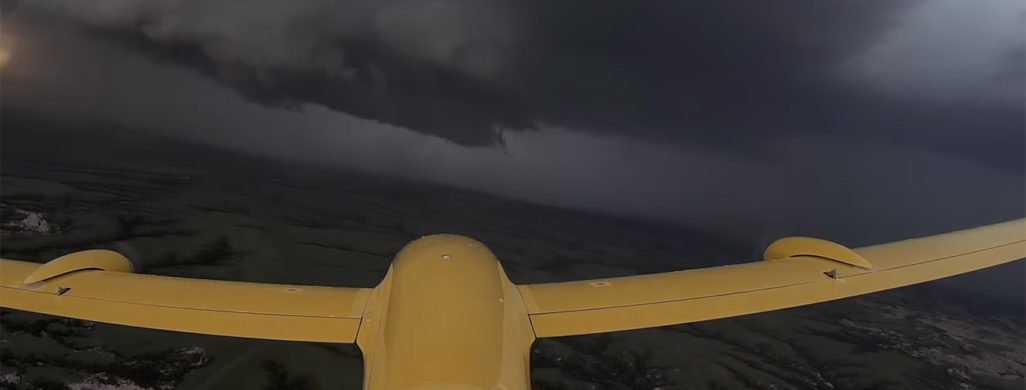What researchers hope to learn from the TORUS field campaign
Why do some storms trigger tornadoes and others do not? To try to answer that question, a team of researchers took to the open roads of the US Great Plains states in May to collect data on the atmospheric conditions that produce supercells and tornadoes.
The Targeted Observation by Radars and Unmanned aircraft systems of Supercells, or TORUS, experiment will employ a wide-range of tools, including weather balloons, mobile radar and drones, to amass as much information about the storms as possible.
A focal point of the campaign will be to measure air temperature, wind speed and direction, and humidity from the less-studied forward flank of these storms. For obvious reasons, data from these regions are sparse because it would require a researcher to be ahead of a storm, in its direct path. Using drones to fly into this dangerous zone will enable data collection without placing scientists at risk.

An image captured from a TORUS drone used to collect atmospheric data from a supercells forward flank. Credit: Integrated Remote and In-Situ Sensing | University of Colorado
But it is there that UW-Madison Space Science and Engineering Center scientist Leigh Orf expects the data to reveal crucial structures responsible for feeding and supporting the lifecycles of tornadoes. Orf has spent years developing and analyzing high-resolution simulations of supercells that produce massive EF-5 tornadoes with the aid of supercomputers and atmospheric models.
“These simulations give us a way to examine parts of the supercell that are invisible to the naked eye, but crucial to its evolution,” says Orf. “Over and over we’ve noticed a structure that we call the streamwise vorticity current (SVC) that appears to be responsible, in part, for tornado formation and for sustaining the tornado throughout its life.”
In the video above, the SVC (featured on the left in red/yellow) is made up of rain-cooled air near the ground that is drawn into the storm’s updraft. Orf believes it is a crucial part in maintaining an unusually strong storm by enhancing the rotating updraft (mesocyclone) of the supercell near the ground. Interestingly, the SVC is separate from the tornado, never making contact with the funnel but instead going around it as it rises. Currently the SVC has not yet been definitively observed in nature.
Orf is optimistic that the observations collected during TORUS will reveal the complex nature of the storm’s forward flank region, and hopes that the SVC will be ultimately detected in some of the observed supercells.
“Getting in situ data within observed tornadic supercells is a huge challenge, but without such observations we can only speculate about some of the features that show up in simulations. There is no substitution for observations, and with a fleet of four drones, simultaneous observations within the forward flank are possible and would be a tremendous achievement.”
The TORUS project will run until mid-June and will be repeated in May-June 2020.
Funding for SSEC tornado research is provided by the National Science Foundation and UW-Madison Space Science and Engineering Center.
